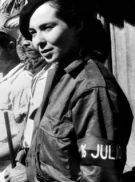
Many perceive Cuba as a third world country and would assume their economic development would be strained as well as their cultural development. We have discussed in previous posts how even with the U.S. embargo, Cuba has managed to capture a sound exchange with China and the European Countries. Along with the economic development, their cultural development has grown as well. This is seen in the rights of women which have been just as progressive if not more than any other country in Latin America.
Below is a brief outline of the Cuban demographics as of 2014:
sex ratio:
at birth: 1.06 male(s)/female
0-14 years: 1.06 male(s)/female
15-24 years: 1.05 male(s)/female
25-54 years: 1.01 male(s)/female
55-64 years: 0.99 male(s)/female
65 years and over: 0.82 male(s)/female
total population: 0.99 male(s)/female (2014 est.)
“According to the 1953 census, women constituted 37 percent of university graduates.20 By 1956–57, 45 percent of university students and 22 percent of professors were women. They were concentrated in certain professions: in the late 1950s, 622 women were studying in pharmacy, 430 in law, and 388 in philosophy and letters; only 7 women studied agricultural engineering, 4 civil engineering, and 3 electrical engineering.” (Women in Cuba: Education & Employment Before the Revolution)

The Revolution took place between 1953 and 1959 and ultimately brought the authoritarian government into a communist at the hand of Fidel Castro. During this time, a woman highly involved in the female rights discussion was Vilma Espin.
Espin was the wife of Raul Castro (Fidel Castro’s brother and now President of Cuba). Vilma was the president of the Federation of Cuban Women (FCW) which is a nationally recognized organization for the advancement of Women in Cuba. Some of the goals of the FCW include:
- eradicating illiteracy
- Bringing Women out of the home and into the economy
- providing equal opportunities for women
- mobilizing women into political work and government administration
After the 1959 revolution, Fidel Castro set a goal to eliminate illiteracy throughout Cuba. By 1962 Cuba was declared a “territory Free of Illiteracy” with over half a million literates being women.
In the Constitution of the Republic of Cuba modified in 1992, Chapter VI article 42 states:
“Discrimination based on race, skin color, sex, national origin, religious beliefs and any other concept harmful to human dignity is proscribed and sentenced by law.1”
Other prominent Cuban women that are involved in the cultural development are:
Salsa artist Celia Cruz (1925-2003) who began her career in 1950 and later migrated to the united States during the revolution.
Lastly, another influential Cuban woman is Singer Rita Marley (1946-) who was married to Legendary Bob Marley and is now a children’s activist. Rita Marley has established a sister foundation to the Bob Marley foundation. Through her foundation, she distributes vaccinations, helps with agricultural projects, and provides goods to remote villages.
As we can see women have played an active role in the development of Cuba both economically and culturally. I look forward to exploring what additional acts will manifest to help the development of Women’s rights in Cuba.
Resources:
Celia Cruz. (2016). In Encyclopædia Britannica. Retrieved from http://www.britannica.com/biography/Celia-Cruz
Cuba Demographics Profile 2014. (2015, June 30). Retrieved March 04, 2016, from http://www.indexmundi.com/cuba/demographics_profile.html
CIA World Factbook
Gott, R. (2007, June 19). Obituary: Vilma Espín Guillois. Retrieved March 05, 2016, from http://www.theguardian.com/news/2007/jun/20/obituaries.cuba
“Marley, Rita.” Contemporary Black Biography. 2009. Retrieved March 06, 2016 from Encyclopedia.com: http://www.encyclopedia.com/doc/1G2-3286100039.html
McCall, C.. (1987). Women and Literacy: The Cuban Experience. Journal of Reading, 30(4), 318–324. Retrieved from http://www.jstor.org/stable/40032860
Un Dialogo Entre Mujeres: Cuba – A Dialogue Among Women: Cuba. (n.d.). Retrieved March 04, 2016, from http://lwv.org/content/un-dialogo-entre-mujeres-cuba-dialogue-among-women-cuba